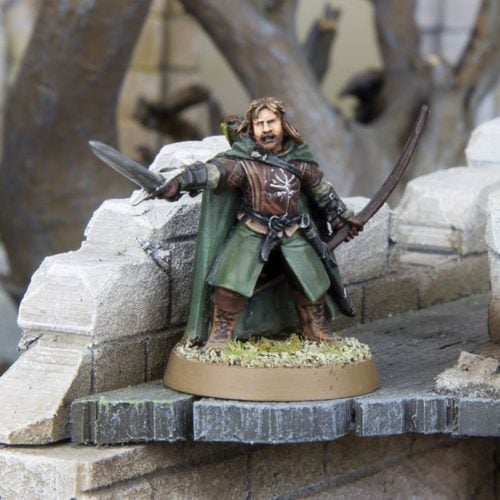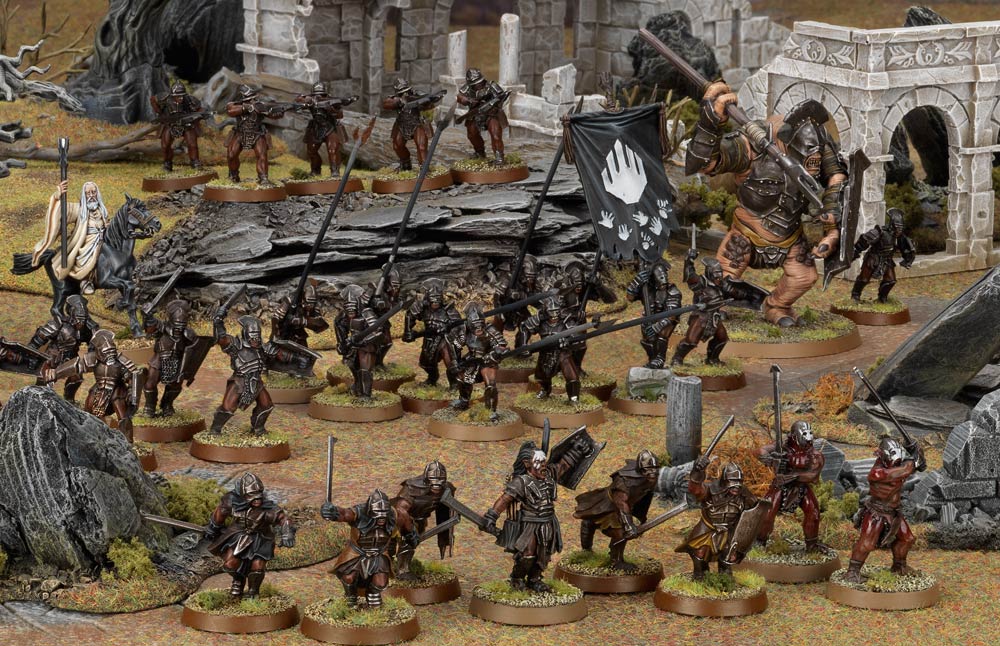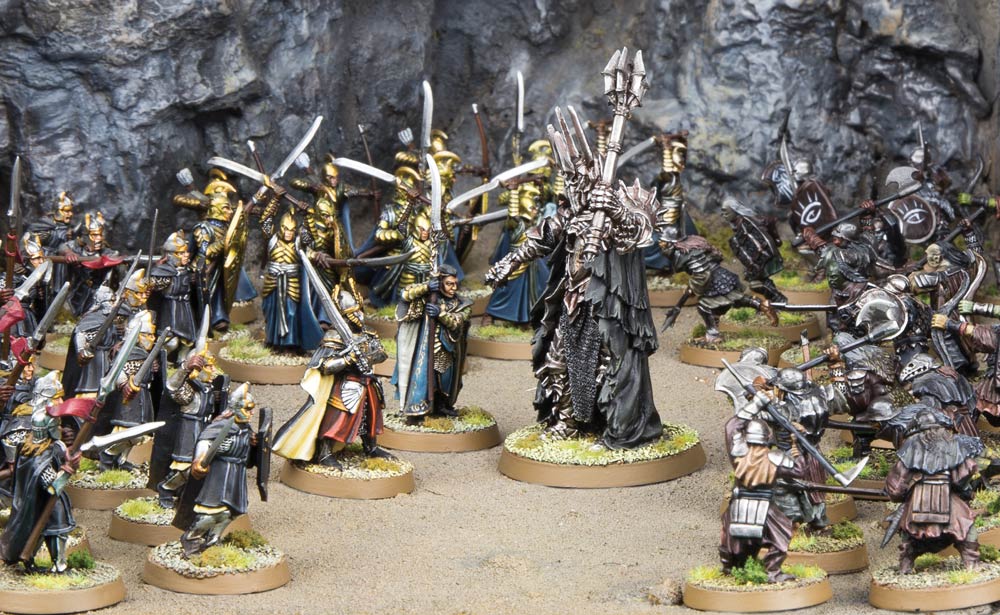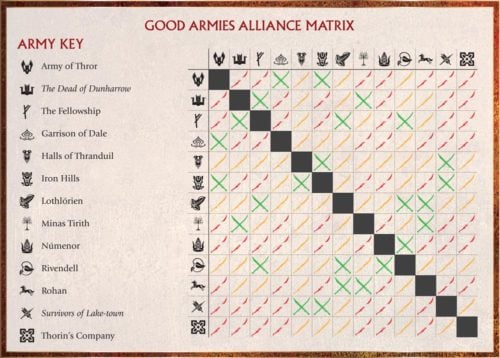We are learning more about the changes coming to Middle Earth and this time we are focusing on building your armies with Heroic Tiers, Allies, and more. Take a look at the changes to the game as its looking better and better.
via the Warhammer Community
https://www.warhammer-community.com/2018/08/24/aug23-middle-earth-building-your-force-middle-earthgw-homepage-post-3fw-homepage-post-3/

In the new edition, every single Hero in the Strategy Battle Game has a Heroic Tier listed in their profile next to their Keywords. This will effectively tell you how highly the Hero ranks within your army’s structure, and how many followers they can lead into battle.
Below are the five different Heroic Tiers, and some examples of Heroes that are at each level.
Heroes of Legend are the greatest Heroes in Middle-earth. They are often the rulers of their respective faction, and as such can lead the most followers into battle – 18 in their case.
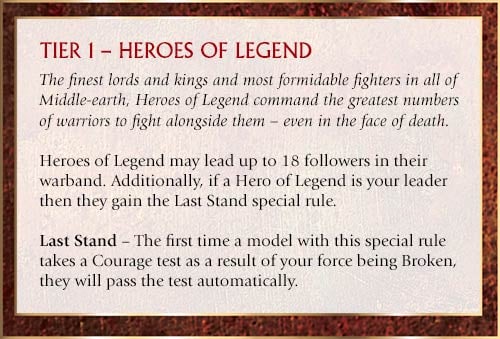
An army list will usually have only one Hero of Legend. They also have the Last Stand special rule meaning they will never fail the first Courage test they need to take when their force is Broken – rather handy for your leader. Aragorn, King Elessar, and The Dark Lord Sauron are examples of Heroes of Legend.
Heroes of Valour are those champions or villains who have proved themselves to be great warriors or leaders, though they themselves are not usually the generals of their faction.
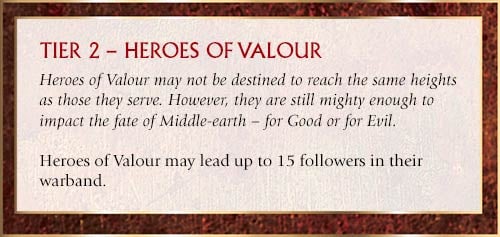
They can lead up to 15 followers in their warbands. Boromir, Captain of the White Tower, and Khamûl the Easterling are examples of Heroes of Valour.
Heroes of Fortitude are the most common type of Heroes in the game. They are mainly captains or leaders of a similar stature.
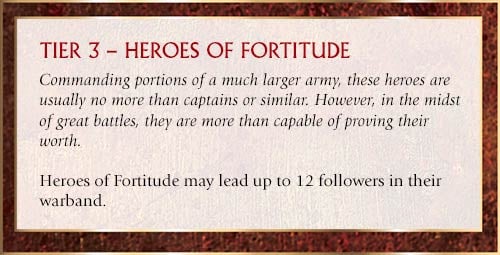
They can have up to 12 followers in their warbands. Madril and Gorbagare examples of Heroes of Fortitude.
Minor Heroes are those Heroes who are not natural leaders, but in times of war can command a small number of those around and often achieve great feats. They can lead up to 6 followers in their warbands.
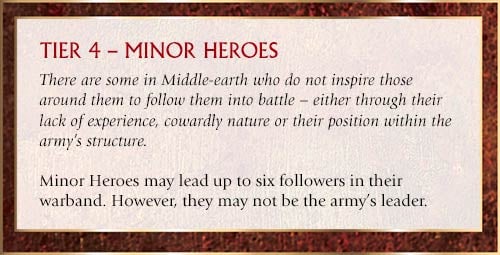
Éowyn and Shamans are examples of Minor Heroes.
Independent Heroes are those who have no leadership skills or aren’t suited to command – either they are not skilled leaders, have not earned the respect of their fellows or are simply too terrifying for others to follow.
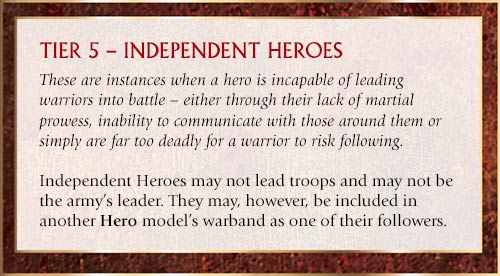
They cannot lead warbands, but they can, however, (usually) be included in other Heroes’ warbands. Peregrin Took, Guard of the Citadel, and Shelob are Independent Heroes.

Previously, a player could choose any of the Heroes in their army list to be their leader, and this led to some rather odd situations. Armies including multiple Ringwraiths would be led by lowly Heroes like Gorbag, and armies of Minas Tirith with Boromir and Faramir would be led by Heroes like Madril. This never felt right, and so we made a change to how you work out your leader.
Now, the Hero with the highest Heroic Tier is automatically your leader – if there are multiple Heroes tied for top spot, then you get to choose between them. No more Pippin hiding at the back of the board whilst Gandalf and Galadriel are in the army! Your leader will now be the most important Hero in your army, just as they should be.

When we released The Hobbit: Motion Picture Trilogy™ There and Back Again, we introduced the concept of Army Bonuses – a system where, if an army was comprised only of models from a single army list, it would gain an additional special rule for doing so. These proved very popular, encouraging players to use thematic forces even in Matched Play tournaments, and so we decided to incorporate them across every army from The Lord of the Rings™ too!
We will be showing off some of these army bonuses in detail in the coming days.

The Lord of the Rings™ and The Hobbit™ are filled with stories of friendship and alliances, and so it made sense to have rules for forging alliances in your games. Those of you who have been playing the Strategy Battle Game for a while might remember a time where there was a whole list of different allies. Well, it’s back in the form of the Allies Matrix.
There are three types of alliances, each with their own rules.
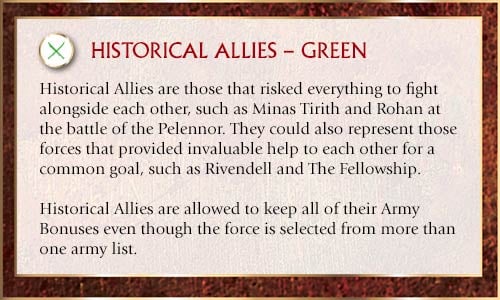
These are those alliances that happened on screen or in the pages of the books. When you use Historical Allies, both of the army lists you use get to keep their Army Bonus, even though your forces are not from a single list – a great advantage for using those famous alliances from Middle-earth.
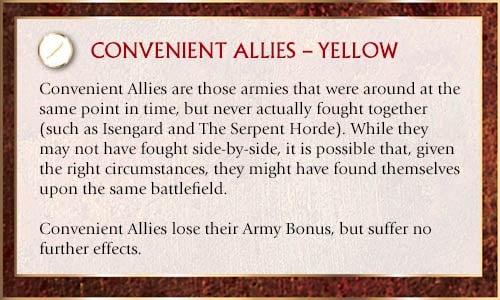
Allies of Convenience are those that were theoretically possible in that the armies in question existed at the same time, but may not have actually fought together. Allies of Convenience lose their Army Bonuses but suffer no further effects.
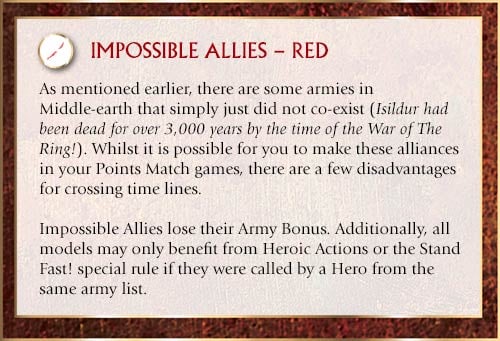
Impossible Allies are, quite simply, armies that did not (and perhaps could not) co-exist. You can use these armies together, but there are some drawbacks. First, both armies will lose their Army Bonus. Second, Heroes will only be able to affect models from their own list with their Heroic Actions and Stand Fast! So if you want to use Impossible Allies, be prepared to work around this.



